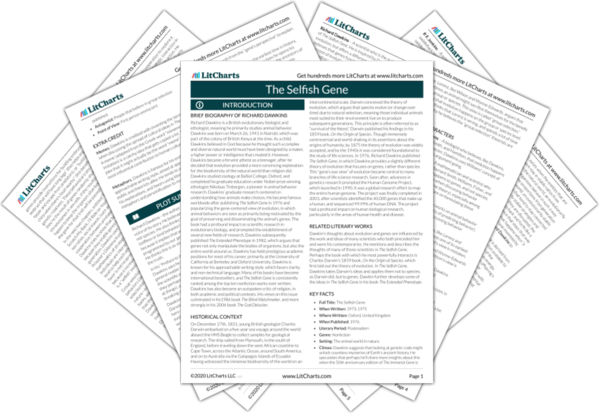Dawkins aims to show that the “group” cannot be the unit of evolution because it’s an unclear category. Lions and antelopes are different species, so they can be seen as different groups. Yet they are also mammals, and can be seen as part of the same group, which is contradictory. Therefore, the very notion of evolution happening on the group level is illogical.
